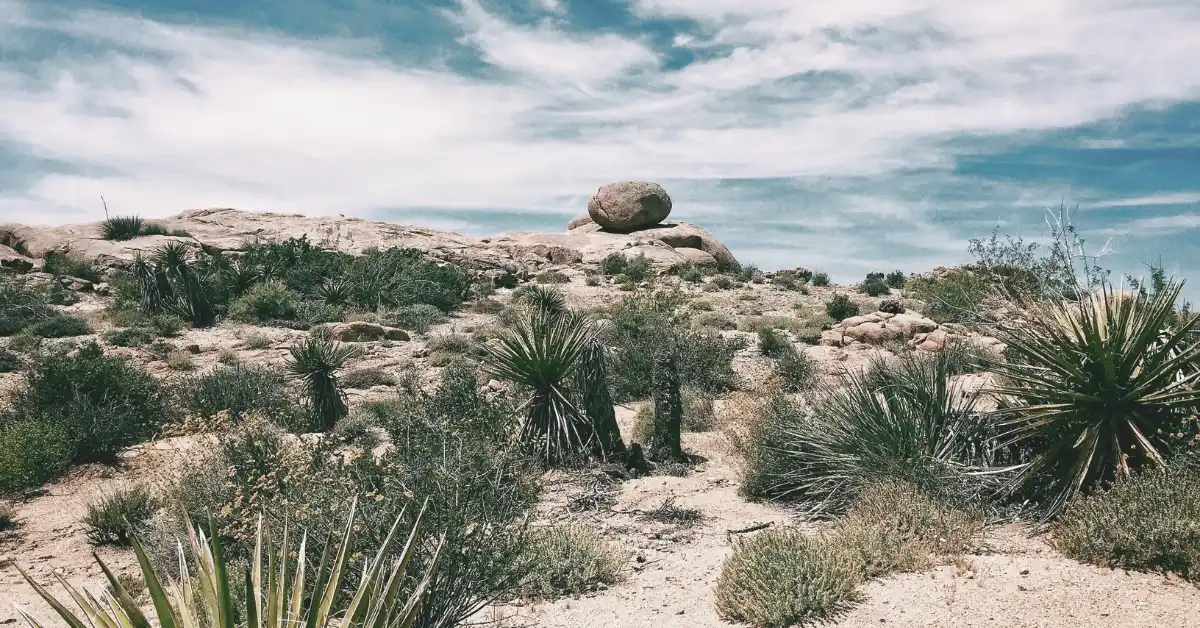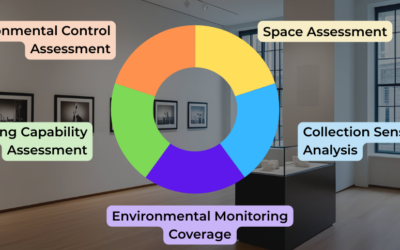I was visiting with a museum colleague who had recently moved to Santa Fe, New Mexico from the Midwest. He said he was thrown by the environmental conditions that he now must deal with managing collections in an arid environment. He said that his training on museum environments had always stressed how to deal with high humidity and moderate diurnal temperature swings, quite the opposite of conditions he is now experiencing. He was intrigued that snow often evaporates or sublimes rather than melting to leave a muddy mess. Or, with the phenomena of virga, where rain evaporates before it reaches the ground. How do we (or should we) deal with museum environments in arid regions?
Collections in arid and semi-arid environments
Within the continental United States about 25 – 35 % of the land mass is considered arid or semi-arid. This is formally defined as areas with low relative humidity, low precipitation, high evaporation rates, often large diurnal temperature swings – 25°F to 40°F swings from day to night (warmer days and cold nights), clear skies, and intense sunlight.
These regions may be hot most of the time, or they may change seasonally from extreme heat to extreme cold. There may also be extreme seasonal changes in precipitation – winter storms and summer monsoons. And not only does the amount of precipitation usually change from year to year, entire weather patterns can also change from year to year.
With these extreme challenges in mind, here are 9 things to keep in mind for collections in arid regions.
#1 Monitor
Monitor your environment and pay close attention to the weather. Determine your median relative humidity in your buildings over a year. Decide how much deviation you will allow from your median. For instance, if your median relative humidity over a year is 35%, will you allow a +2%, +5%, +10% or larger flux in the various spaces in your collections? Remember to keep in mind sustainability goals! Unsure of where to start? Download our free Definitive Guide To Environmental Monitoring for a comprehensive guide.
#2 Do not attempt humidification
For those of you managing collections in arid environments, do not try to raise the interior humidity in your spaces to meet published standards. This type of action is hard (and expensive) to maintain. Usually, it is not very successful and, ultimately, can be harmful to your collections if they are already acclimated to dry conditions. Learn more about the history of environmental monitoring standards so you can make an informed decision.
#3 Decide on seasonal fluctuations
In addition, determine if you will allow seasonal fluctuation in your collection’s environment. For instance, in the summer, will you allow your interior temperature to rise slightly during the hotter months and, if so, by how much?
#4 Leverage your building envelope
Use your building to help temper your collection’s environment.
- Be diligent about maintenance of the building. Make sure your roof and walls are in good repair and have adequate insulation and mass to smooth out environmental changes in your building’s interior as it responds to external changes in temperature and humidity.
- Monitor for leaks and repair them promptly. While mold is not usually a problem, hidden areas that have excess moisture can harbor mold.
- Take steps to avoid drafts in the interior of your building. Make sure your windows do not leak and close properly to prevent drafts and the influx of dust. Use window coverings or storm windows to help even out the interior temperatures and to control heating caused by sunlight coming into the building.
- If possible, establish a vestibule – a passage, hall, or room between the outer door and the interior of your building. This will prevent rapid internal environmental changes as people come in and out of your building.
- Filter air intake, where possible, to help cut down on dust.
#5 Know your collections and understand your materials
What kind of materials do you have in your collections? Organic materials will be the most susceptible to changes in relative humidity while inorganic materials will be considerably less sensitive. Dry conditions may even help some types of collections from certain kinds of deterioration. For instance, paper will yellow more slowly in a dry environment and metals will be less likely to corrode.
#6 Remember your collection’s lifetime history
Keep in mind that if you have had your collection for some time, most of it is probably acclimated to your environment. Organic materials, if unconstrained so that they can expand and contract with changes in RH usually will have little or no problems if they have been acclimated to dry conditions. The Canadian Conservation Institute (CCI) calls this “proofed fluctuation.” In other words, any mechanical damage that could have been caused by changes in relative humidity (like warping and cracking) have probably already occurred in the past and are therefore unlikely to happen again unless conditions become even more extreme than the past conditions which caused the original damage.
#7 Identify your especially sensitive collections
You may have some collection materials that are more sensitive to arid environments than others, and those materials may need extra buffering to help avoid extremes. They need to be kept in closed exhibit cases with buffering materials to keep them at a higher localized humidity. This can be done using silica gels or other materials to maintain specific microclimates in a localized area. Watch this great webinar recording on Demystifying Silica gel for Effective Microclimates on the Connecting to Collections Care website for useful pointers.
- Add passive buffering materials to objects where possible. For instance, framed objects like paintings should be backed with paper, rather than having no backing.
- There are specialized humidifiers used inside musical instruments that might be useful for items like furniture that cannot be enclosed or covered.
#8 Adjust according to the season
Pay attention to the seasonal weather changes and adjust your collection spaces accordingly. For instance, in the spring or fall of arid and semi-arid regions, high winds and ultra-low relative humidity are a fire danger. Summer monsoonal rains can cause humidity to rise and fall rapidly in a 24-hour period – low humidity in the morning, rapid rise during and after afternoon rains, followed by a dramatic drop in humidity overnight. During periods like these, you might need to make sure your most sensitive collections are in closed storage or in closed exhibition cases.
Did you know that Conserv Cloud lets you set different seasonal levels? Try out the platform today.
#9 Above all, avoid extremes
The ultimate goal is to prevent large excursions in the relative humidity and temperature away from what you have determined is the median relative humidity for your collections, exhibits and storage spaces.
Learn more from Susan about collections in arid environments!
Did you know M. Susan Barger is a member of the Conserv Community? If you would like to get more of her wonderful wisdom on how to manage collections in arid environments for preservation, make sure you head over there and start a conversation!
If you have any questions about environmental monitoring, integrated pest management, or just want to talk about preventative conservation, please reach out to us! Don’t forget to check out our blog or join our community of collections care professionals where you can discuss hot topics, connect with your peers or even take a course to get familiar with the Conserv platform.





